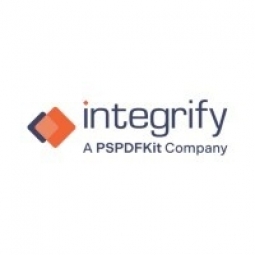技术
- 机器人 - 轮式机器人
适用行业
- 金融与保险
- 药品
适用功能
- 维护
- 产品研发
用例
- 租赁金融自动化
服务
- 系统集成
关于客户
PCI Pharma Services 是药物开发服务领域的全球领先者。该公司在药品开发和商业化的每个阶段为客户提供支持。 PCI 提供从早期药物开发、分析实验室服务、早期临床研究到大规模商业启动和持续商业供应的服务。该公司发展迅速,在过去几年中收购了多家公司。尽管有所增长,PCI 仍然保持着逐年的大量投资,为其客户提供一流的技术。
挑战
PCI Pharma Services 是药物开发服务领域的全球领先者,其资本支出审批流程面临挑战。该公司一直在快速发展并收购了多家公司,每年都保持大量投资,为客户提供一流的技术。然而,收购开始加剧资本支出审批的挑战。基于纸质的资本支出请求系统效率低下且缺乏集中化。一旦请求获得批准,文件就会存放在请求它的站点上,这使得财务部门很难获取有关资本支出的信息。该公司需要一个工作流程系统,允许移动审批,并为所有请求提供集中且安全的数据存储,以确保 100% 的审计合规性。
解决方案
经过内部讨论后,决定外部提供商最适合支持资本支出审批软件系统。 PCI 的关键决策者 Ken Richardson 找到了多家供应商,但对 Integrify 的功能以及他在整个过程中获得的响应能力印象深刻。他坚信 Integrify 的云解决方案是轻松实施、无处不在的访问和轻松维护的正确答案。最初,只有每个站点的控制员有权提出请求,以更加受控地启动审批系统。然而,已经制定了扩大请求者社区的计划。资本支出工作流程的设计包含要捕获每个请求的关键数据点。提交请求后,理查森和任何其他批准的利益相关者现在可以 24x7 访问有关请求的所有信息,使他们能够做出批准决定。
运营影响

Case Study missing?
Start adding your own!
Register with your work email and create a new case study profile for your business.
相关案例.

Case Study
Case Study: Pfizer
Pfizer’s high-performance computing software and systems for worldwide research and development support large-scale data analysis, research projects, clinical analytics, and modeling. Pfizer’s computing services are used across the spectrum of research and development efforts, from the deep biological understanding of disease to the design of safe, efficacious therapeutic agents.

Case Study
Fusion Middleware Integration on Cloud for Pharma Major
Customer wanted a real-time, seamless, cloud based integration between the existing on premise and cloud based application using SOA technology on Oracle Fusion Middleware Platform, a Contingent Worker Solution to collect, track, manage and report information for on-boarding, maintenance and off-boarding of contingent workers using a streamlined and Integrated business process, and streamlining of integration to the back-end systems and multiple SaaS applications.

Case Study
Process Control System Support
In many automated production facilities, changes are made to SIMATIC PCS 7 projects on a daily basis, with individual processes often optimised by multiple workers due to shift changes. Documentation is key here, as this keeps workers informed about why a change was made. Furthermore, SIMATIC PCS 7 installations are generally used in locations where documentation is required for audits and certification. The ability to track changes between two software projects is not only an invaluable aid during shift changes, but also when searching for errors or optimising a PCS 7 installation. Every change made to the system is labour-intensive and time-consuming. Moreover, there is also the risk that errors may occur. If a change is saved in the project, then the old version is lost unless a backup copy was created in advance. If no backup was created, it will no longer be possible to return to the previous state if and when programming errors occur. Each backup denotes a version used by the SIMATIC PCS 7 system to operate an installation. To correctly interpret a version, information is required on WHO changed WHAT, WHERE, WHEN and WHY: - Who created the version/who is responsible for the version? - Who released the version? - What was changed in the version i.e. in which block or module of the SIMATIC PCS 7 installation were the changes made? - When was the version created? Is this the latest version or is there a more recent version? - Why were the changes made to the version? If they are part of a regular maintenance cycle, then is the aim to fix an error or to improve production processes? - Is this particular version also the version currently being used in production? The fact that SIMATIC PCS 7 projects use extremely large quantities of data complicates the situation even further, and it can take a long time to load and save information as a result. Without a sustainable strategy for operating a SIMATIC PCS 7 installation, searching for the right software version can become extremely time-consuming and the installation may run inefficiently as a result.

Case Study
Real-time In-vehicle Monitoring
The telematic solution provides this vital premium-adjusting information. The solution also helps detect and deter vehicle or trailer theft – as soon as a theft occurs, monitoring personnel can alert the appropriate authorities, providing an exact location.“With more and more insurance companies and major fleet operators interested in monitoring driver behaviour on the grounds of road safety, efficient logistics and costs, the market for this type of device and associated e-business services is growing rapidly within Italy and the rest of Europe,” says Franco.“The insurance companies are especially interested in the pay-per-use and pay-as-you-drive applications while other organisations employ the technology for road user charging.”“One million vehicles in Italy currently carry such devices and forecasts indicate that the European market will increase tenfold by 2014.However, for our technology to work effectively, we needed a highly reliable wireless data network to carry the information between the vehicles and monitoring stations.”









